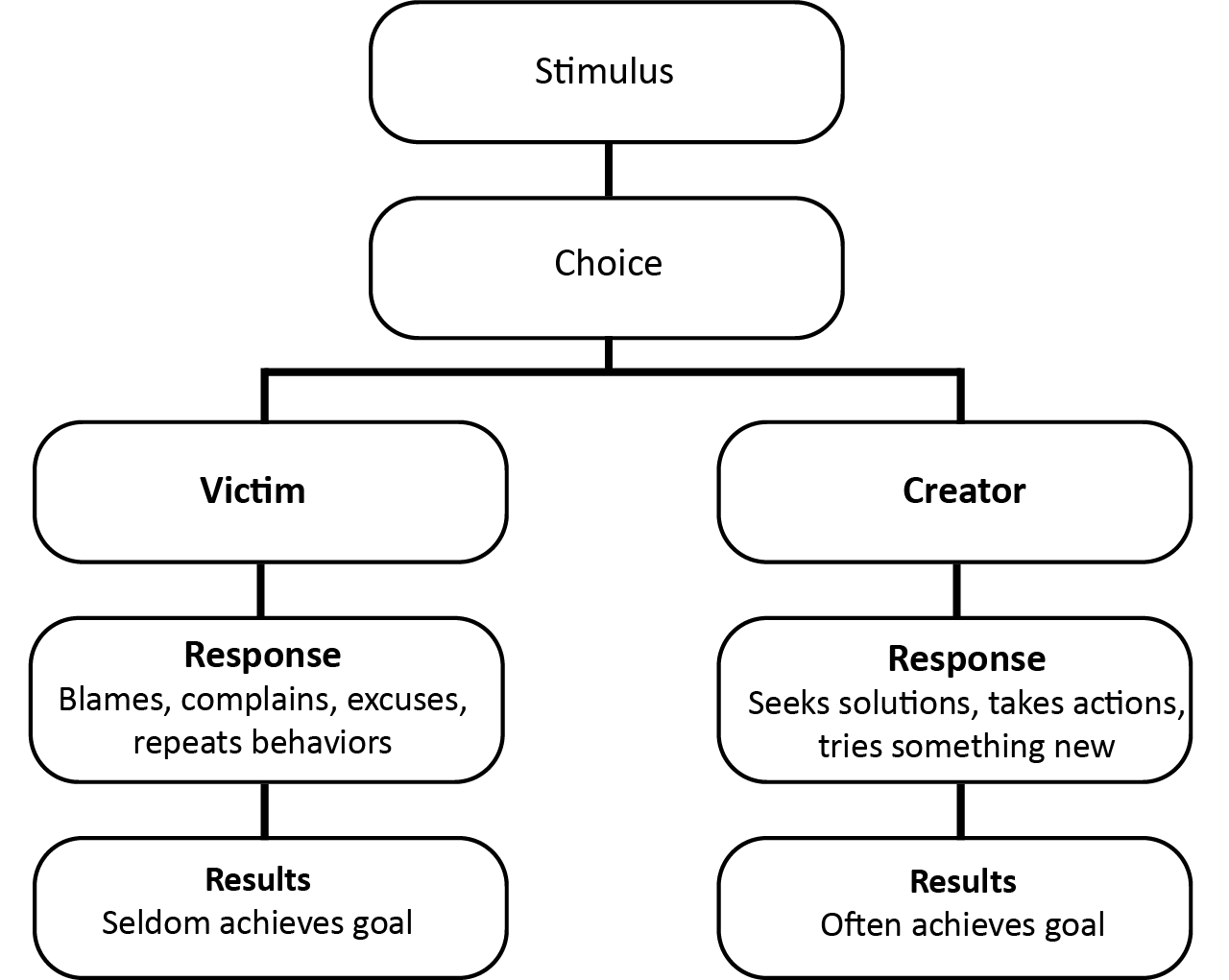3.1: Attitude- It's your choice
- Page ID
- 11021
\( \newcommand{\vecs}[1]{\overset { \scriptstyle \rightharpoonup} {\mathbf{#1}} } \) \( \newcommand{\vecd}[1]{\overset{-\!-\!\rightharpoonup}{\vphantom{a}\smash {#1}}} \)\(\newcommand{\id}{\mathrm{id}}\) \( \newcommand{\Span}{\mathrm{span}}\) \( \newcommand{\kernel}{\mathrm{null}\,}\) \( \newcommand{\range}{\mathrm{range}\,}\) \( \newcommand{\RealPart}{\mathrm{Re}}\) \( \newcommand{\ImaginaryPart}{\mathrm{Im}}\) \( \newcommand{\Argument}{\mathrm{Arg}}\) \( \newcommand{\norm}[1]{\| #1 \|}\) \( \newcommand{\inner}[2]{\langle #1, #2 \rangle}\) \( \newcommand{\Span}{\mathrm{span}}\) \(\newcommand{\id}{\mathrm{id}}\) \( \newcommand{\Span}{\mathrm{span}}\) \( \newcommand{\kernel}{\mathrm{null}\,}\) \( \newcommand{\range}{\mathrm{range}\,}\) \( \newcommand{\RealPart}{\mathrm{Re}}\) \( \newcommand{\ImaginaryPart}{\mathrm{Im}}\) \( \newcommand{\Argument}{\mathrm{Arg}}\) \( \newcommand{\norm}[1]{\| #1 \|}\) \( \newcommand{\inner}[2]{\langle #1, #2 \rangle}\) \( \newcommand{\Span}{\mathrm{span}}\)\(\newcommand{\AA}{\unicode[.8,0]{x212B}}\)
Victims and Creators
| Victims | Creators |
|---|---|
| Focus on their weaknesses related to a situation | Look to use their strengths to over- come obstacles |
| Complain and make excuses | Acknowledge the problem and seek solutions |
| Blame someone else | Take personal responsibility |
| See problems as permanent, catastrophic events | See problems as temporary events that they can overcome |
| Repeat behaviors that have not been successful in the past | Actively seek new information and take new actions based on this information |
| Predict defeat in the face of obstacles | Look for better ways to approach a problem |
| Use negative self-talk like “This professor is stupid.” | Use more positive self-talk like “I am having troubles focusing in this class so I am going to prepare for class and sit in the front.” |


